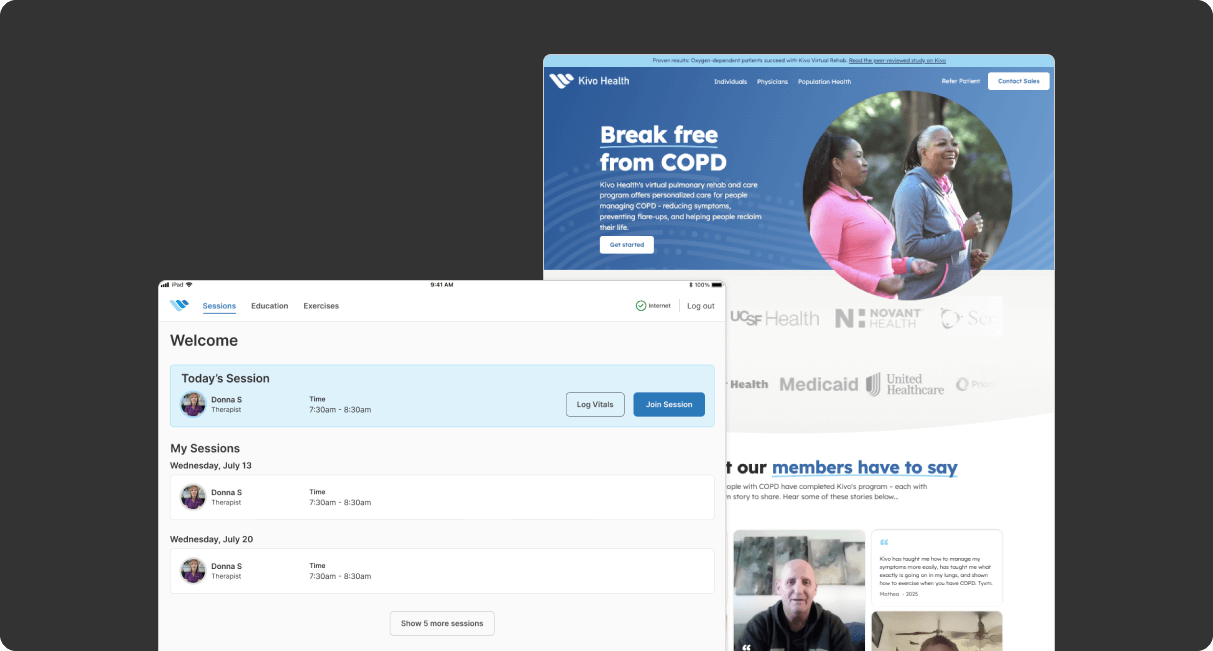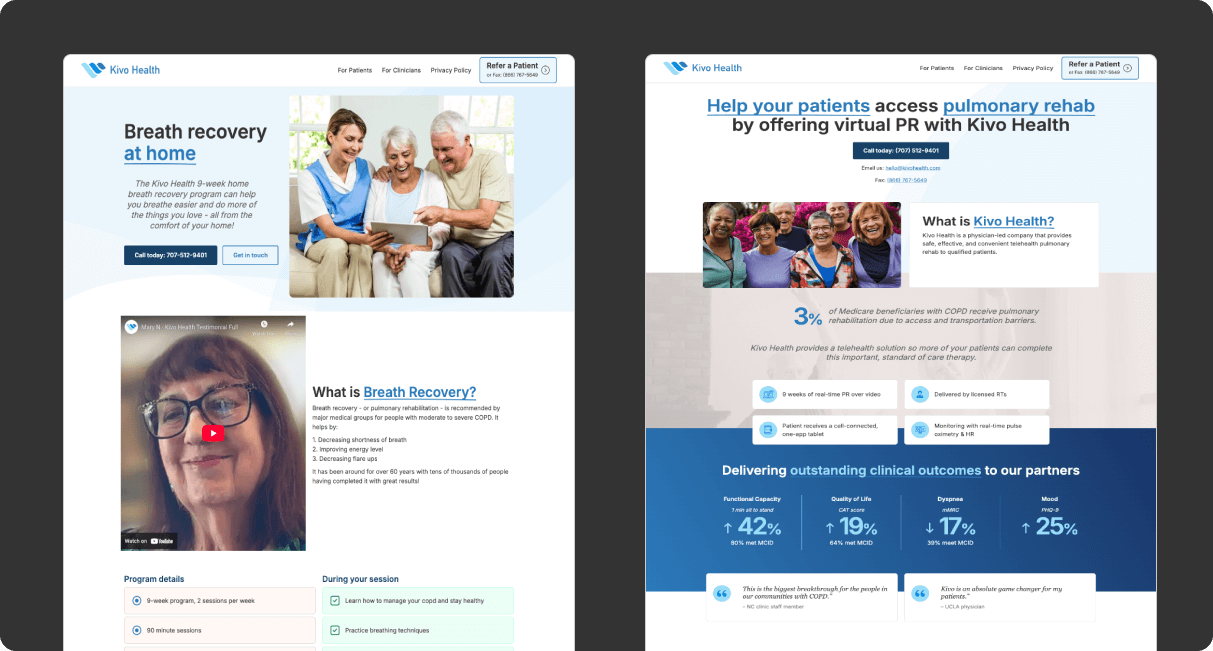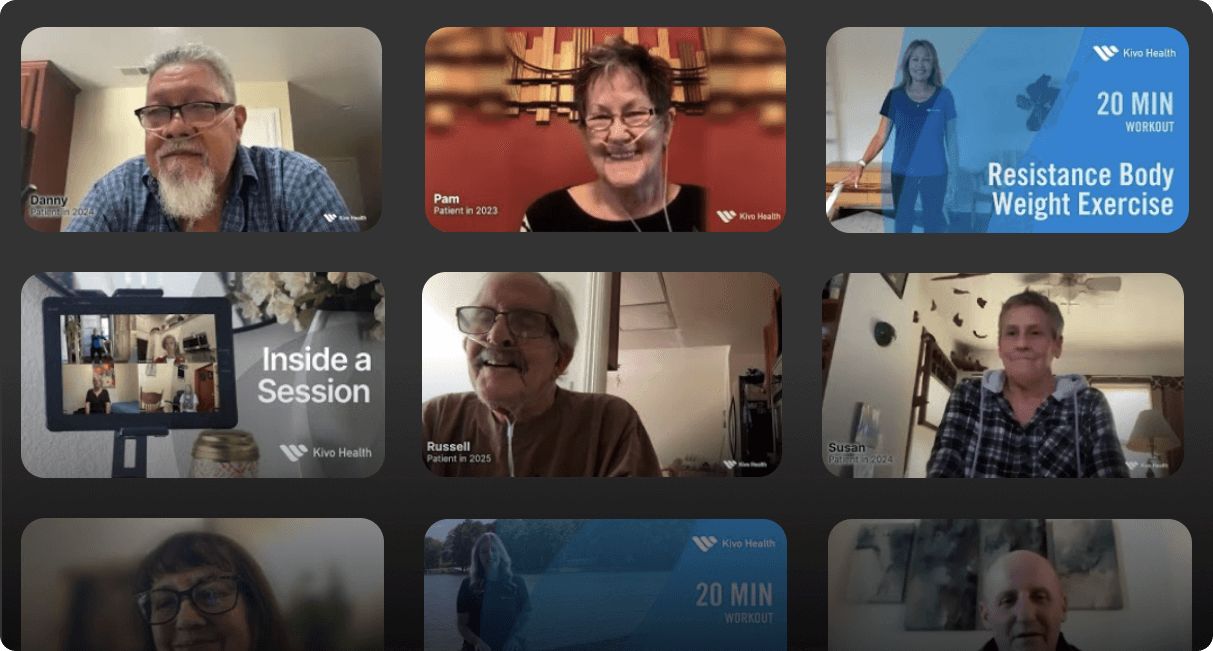Kivo Health - Telehealth Patient iPad App
Designed an intuitive digital health app that helped 1,800+ patients through a 9-week COPD management program. The iOS app featured seamless telehealth integration and remote monitoring, with a user-centric design.

Designing for an Elderly, Chronically Ill Demographic
Kivo Health's telehealth program served patients 65+ managing chronic obstructive pulmonary disease (COPD). These users had limited tech experience, often struggled with complex interfaces, and needed to use the app while managing breathing difficulties.
Every design decision had to balance clinical requirements, technical constraints, and the reality of our users' capabilities.
Rethinking Authentication for Elderly Users

Phone-based login simplified access for elderly patients
The Problem
We assumed a simple email/password system would work for elderly users since it's a common pattern. Instead, we got frequent login issues: forgotten passwords, email typos, and support calls from frustrated patients who couldn't access their scheduled sessions.
The Solution
Switched to phone-based authentication with a simple SMS code. Phone numbers are more memorable for our 65+ demographic, and entering a 6-digit code proved far more reliable than remembering complex passwords. This reduced authentication-related support calls.
Less Information, Better Focus

Clinicians maintained full monitoring without distracting patients
The Problem
We initially displayed real-time vitals (heart rate, oxygen levels) thinking patients would want transparency and engagement. Instead, therapists reported patients were watching their heart rate graphs instead of following breathing exercises. The data became a distraction rather than helpful feedback.
The Solution
Removed patient-facing real-time displays while keeping clinician monitoring on their end. Patients could focus on therapeutic instructions without fixating on numbers that often caused anxiety. Clinicians still had full monitoring capabilities to intervene when needed.
Prioritizing Attendance Over Data Collection

Removed friction from the pre-session flow
The Problem
We added pre-session health questionnaires assuming they'd provide valuable clinical context for therapists. However, patients found them tedious, and therapists reported they preferred verbal check-ins during sessions. The questionnaires were slowing down session joins and creating friction right before appointments.
The Solution
Eliminated questionnaires entirely to prioritize session attendance. Therapists could assess patient status verbally during the natural flow of conversation, and patients could join sessions immediately when scheduled. This removed a barrier that was delaying or preventing session starts.
Additional Work

Marketing Website
Worked with the marketing team to create a compelling narrative that effectively communicated program benefits to both physicians and patients. Created a conversion-focused site that established a professional digital presence for the brand.

Physical Kit Redesign
Spearheaded a packaging redesign that transformed the monitoring devices and program materials into a professional, branded patient experience. The redesigned kit improved the unboxing experience and reduced support inquiries about device use.

Patient Success Stories
Edited powerful patient testimonial videos that showcased program effectiveness and success stories. These video assets were key to physician onboarding while establishing social proof to increase trust among potential patients living with chronic diseases.
